Here’s Tom Boswell‘s latest column about the Nats. The more I read it, the more irritated I get with his stance. Maybe it was a column designed to get a reaction of of people. If so maybe I’m just a sucker for reacting (and writing this blog post). So be it; in a town with so little Nats press coverage, those stories that do get printed have that much more import to the general public. And I don’t want the general public feeding off of a crap story like this to get their impression about the team, where it stands, and where its going.
As far as I can tell, Boswell is taking the tired stance that “The Lerner’s are cheap” since they havn’t accomplished what they’ve laid out to accomplish this off-season (namely, obtain a Center Fielder and a Starting Pitcher).
Here’s the gist of one quote that I can’t get over:
If you want to know why it’s almost Christmas and the Nats haven’t signed Mark Buehrle, Roy Oswalt or Edwin Jackson, why they haven’t bid on Yu Darvish or Yoenis Cespedes, why they haven’t been within a zillion miles of C.J. Wilson, Jose Reyes or Prince Fielder, and especially why they haven’t made a prospects-for-a-star trade such as the Reds for ace Mat Latos, it’s probably because ownership is tensing up, tightening the leash again.
Wow. Well there’s an awful lot of assumptions in here. Player by player:
- Mark Buehrle: the team DID make an offer to him, and came in 2nd. The Marlins, who suddenly are spending money without abandon, guaranteed a 4th year and a TON of money to sign him. Was Buehrle the answer? Was he worth 4 years at $14.5M in average annual value (AAV) per year? To say nothing of the fact that Miami heavily back loaded the contract so that Buehrle will be getting an asounding $19M in 2016, when he’s scheduled to be a soft-tossing lefty turning 36 years old. I’m sorry; its a bad contract and you cannot fault the Nats for not wanting to extend that much money on a guy who is no better than a #3 starter in this league.
- Roy Oswalt: last time I checked, Oswalt hasn’t signed. You can’t MAKE a player sign a contract! Why is it the Nats fault that Oswalt likely is on vacation with his family and hasn’t signed a 2012 contract yet? In fact he specifically said that he was waiting for the markets for both Wilson and Buehrle to clear before he even considered what he was going to do.
- Edwin Jackson: Boras client. Boras clients wait til the last minute to “create the market.” Nobody’s heard a peep out of Boras’ camp yet. Again, how is it the Nat’s fault that Jackson hasn’t signed yet??
- Yu Darvish: $51M in posting fee and then reportedly wants a $75M contract. Darvish isn’t Cliff Lee or CC Sabathia, and those are the only two pitchers with contracts in the 5yr/$120M range. Is Darvish the same as Lee or Sabathia? Not even close. He’s a good prospect who has yet to throw a MLB pitch and who may or may not ever live up to his billing. No other Japanese pitcher has lived up to his billing, so the track record isn’t rosy. There’s taking risks, and then there’s taking ridiculous, franchise altering risks that set you back for 5 years. I will not fault the team for staying out of the Darvish negotiations.
- Yoenis Cespedes hasn’t even established DR residency, so he’s not even an official free agent yet!! How can you fault the team for not pursuing him if he’s not even eligible to sign?? Not to mention the fact that he’s a complete raw talent that needs probably a year and a half of minor league time and couldn’t help us in 2012?
- CJ Wilson was a #2 pitcher who laid a massive egg in the playoffs and signed a lucrative deal to play for his home town team. What makes you think he was even considering coming to Washington?
- Jose Reyes was another bad signing by Miami, giving a ton of money to a clubhouse malcontent, injury risk short stop who only produced when it was his contract year. Why even mention Reyes if he’s not a pitcher or a center fielder, in the context of this article?
- Prince Fielder; again, hasn’t signed yet. Boras client. Not the Nats fault. Maybe Rizzo has spent hours and hours on the phone with Boras and we don’t know. I don’t have a phone tap into the Nats front office, does Boswell? Lets not criticize moves (or lack of them) until they ACTUALLY OCCUR.
- Mat Latos-like deal: well, i’m kinda glad we havn’t made a Latos deal since I thought that deal was incredibly bad for Cincinnati. They gave up one starter, two close-to-the-majors first rounders AND a 4th decent prospect for a guy who I wouldn’t even say is in the best 50 pitchers in the game. If Rizzo mades this trade and gave away the kind of talent that Cincinnati did, there’d be a massive uproar.
Lets face it. The Nats stated needs were always going to be really difficult to fill. Why? Because:
- there was such a lack of starting pitcher FA depth that those candidates out there were ALWAYS going to get bid up ridiculously. Its simple economics; lack of supply means a lot of demand. And, if you’re building a team FOR THE LONG TERM you don’t hamstring yourself trying to chase in the short term.
- There’s even fewer legitimate CF targets out there, either in trade or in the FA market. There’s perhaps 10-12 legitimate CFs in the league who provide plus offense AND plus defense. You’re not going to just “trade for” one of these guys.
So, any deal to fill either spot isn’t going to happen overnight.
Here’s another quote I take issue with:
When are they going to stop trying to build a suspension bridge with the minimum amount of steel and then, as happened in 2008 and ’09, act shocked if it collapses? After one 80-81 third-place year, have they forgotten the pain?
Who says that they are? Last time I checked this team hired Rizzo in 2009, then formulated a plan, and the team has in the last two years improved 10 games each year in the win column while building a top-10 farm system. How can you accuse the team of going off the rails of its own plan just by virtue of the fact that a couple of potential FA targets signed elsewhere in a seller’s market??
Boswell uses phrases in this article such as “All the signs are there,” and “Its probably because…” and “the Nats could end up” and “Its what I suspect is happening.” EVERY one of those phrases is Boswell conjecture. He has no idea what’s really going to happen.
Another quote:
Instead, they’ve done nothing except sign washed-up center fielder Mike Cameron, 39, to a minor league deal.
Really? They’ve done “nothing” except that signing? So all that work scouting players, negotiating with Buehrle, and talking trades was “nothing.” To say nothing of the fact that Cameron, while a minor deal, was a necessary one. This team has NO backup outfielders right now. Just as they have almost no utility infielders. So while CF and a SP were the #1 and #1a off-season priorities, there are other holes to fill.
One more hypocritical quote:
In baseball, no pitfall is more common than becoming infatuated with your own young, unproven, inexpensive players. For example, you look at Ross Detwiler, Brad Peacock and Tommy Milone and figure one of them most likely will become a 100-game winner. Sorry, tilt! Not how it works. They’re nice prospects. But odds are that none ever has a 15-win season. Buehrle and Oswalt already have won 161 and 159 games, respectively — and each may win 50 more.
Oh, so we can’t count on Detwiler, Peacock or Milone (total combined 2012 salary: around $1.2M) but WE SHOULD be throwing upwards of $120M on Yu Darvish!? Because he’s so proven at the major league level? Why isn’t Darvish “just another nice prospect” as well? Wouldn’t you rather see if Brad Peacock is just as good a right handed starter as Darvish at 1/100th of the cost? I would. Especially considering that for that money saved you could end up with somone as good as Darvish AND the next big FA slugger. That’s why you develop prospects, and that’s why you let them play. If instead this is an argument about why we should be getting Oswalt, well see above; Oswalt hasn’t signed yet!
Boswell’s over-riding point seems to be that the Nats need to be spending the anticipated $30M revenue bump they anticipate getting from the new MASN TV contract, now. That’s fair, certainly. But lets not print such a wildly accusatory article when its DECEMBER and half our possible targets are actually still out there. The team may actually still be spending that money! Not to mention the dozens of trade possibilities that nobody’s even considering since, you know, we’re not Mike Rizzo and don’t know what he’s actually considering or talking about with other GMs. We have no idea what’s going to happen tomorrow. Tomorrow this team may sign Fielder, Oswalt AND Cespedes and suddenly Rizzo and Lerner are the heros.
Until tomorrow happens though, printing this kind of reactionary crap is just that. Crap.
Nationals have more cash coming in, but refuse to spend it

Toni L. Sandys/The Washington Post – After making the Nationals respectable in two seasons, General Manager Mike Rizzo said the team was a player or two away from contention. But it seems ownership has not opened the purse strings to sign any significant players.
The Washington Nationals never really seem to learn. Or, rather, the Lerners don’t. As soon as you think they start to get it, they backslide again.
When are the Nats going to be allowed to be good? When will they get to build a winner with a roster that has a sensible margin of safety, rather than constructing a team that can succeed only in a best-case world?
When are they going to stop trying to build a suspension bridge with the minimum amount of steel and then, as happened in 2008 and ’09, act shocked if it collapses? After one 80-81 third-place year, have they forgotten the pain?
It’s happening again. All the signs are there. The Nats’ baseball people lay out clearly what they want to achieve in the offseason. None of it is terribly difficult. But there is risk and expense. Then, as the offseason unfolds, nothing happens.
Was Jayson Werth just the exception that proves the rule? Even his signing only nudged the Nats’ 2011 payroll over its ’05 level, when the team was an MLB chattel. Is what we’re seeing, again, really the distressing norm?
“We’re busy. We’re trying to be aggressive but broad-minded, we’re working behind the scenes,” General Manager Mike Rizzo said on Wednesday, adding that the Nats were working on “bench options.” Bench options? Pine or oak?
If you want to know why it’s almost Christmas and the Nats haven’t signed Mark Buehrle, Roy Oswalt or Edwin Jackson, why they haven’t bid on Yu Darvish or Yoenis Cespedes, why they haven’t been within a zillion miles of C.J. Wilson, Jose Reyes or Prince Fielder, and especially why they haven’t made a prospects-for-a-star trade such as the Reds for ace Mat Latos, it’s probably because ownership is tensing up, tightening the leash again.
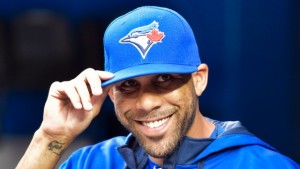
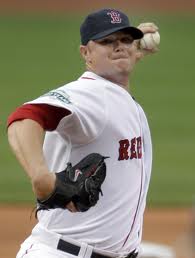

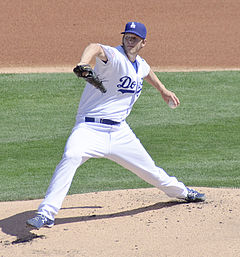


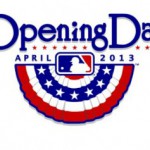
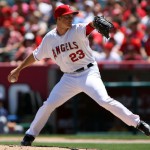


157
Comments